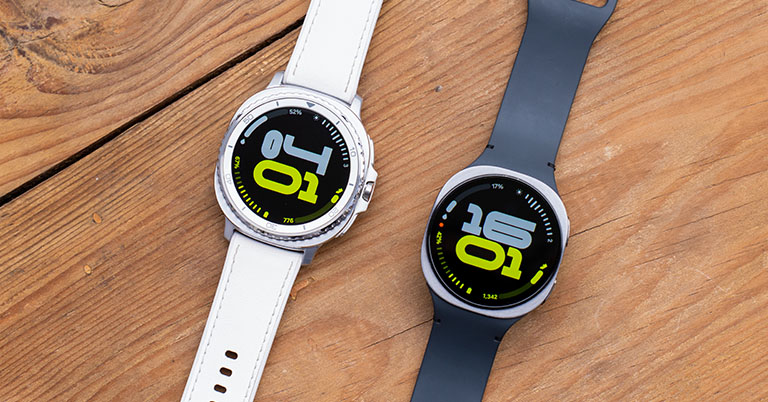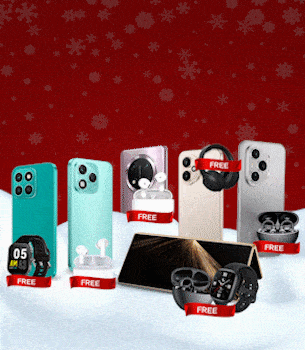No headings found
Why Trust Gadgetbyte?
At Gadgetbyte, we invest substantial hours into rigorously testing each product or service we review, guaranteeing that you make informed purchases. Learn more about our testing process.
Review Overview
The refreshed design (which I do agree is a little divisive) + One UI 8 Watch + some new health and fitness tracking features makes Samsung's Galaxy Watch 8 series among the best smartwatches I have ever used. But the only problem is — for all the upgrades they bring — they are now quite a bit expensive as well.
Design and build
9/10
Display
10/10
Battery
7/10
Software
9/10
Health and fitness tracking
9/10
Companion app
9/10
Value for money
8/10
Samsung’s new smartwatches are here: the Galaxy Watch 8 and Watch 8 Classic. And they both have a completely new look, a completely redesigned user interface, and a couple of completely new health tracking features.
Which honestly feels quite refreshing to say since I remember just how few upgrades Samsung brought to the table with its past couple of generations of smartwatches. So, needless to say, these are some of the best smartwatches Samsung has ever made.
And also some of the most expensive ones, because look at their prices, man! The regular Galaxy Watch 8 starts at NPR 54,999 while the Watch 8 Classic costs NPR 74,999! That's a lot of money to spend on a watch, so before you buy one of these, let me tell you what you're getting into here.
Samsung Galaxy Watch 8 and Watch 8 Classic review: Specifications
| Galaxy Watch 8 | Galaxy Watch 8 Classic | |
| Dimensions | 40mm: 40.4 x 42.7 x 8.6 mm | 46mm: 46.4 x 46 x 10.6 mm |
| 44mm: 43.7 x 46 x 8.6 mm | ||
| Weight | 40mm: 30 gm | 46mm: 63.5 gm |
| 44mm: 34 gm | ||
| Color options | Graphite, Silver | Black, White |
| Display | 1.34 / 1.47-inch Super AMOLED panel | 1.34-inch Super AMOLED panel |
| Display protection | Sapphire Crystal glass protection | |
| Processor | Exynos W1000 (3nm) | |
| Memory | 2GB RAM, 32GB storage | 2GB RAM, 64GB storage |
| Software and UI | Wear OS 6 with Samsung’s One UI Watch 8 on top | |
| Sensors | Samsung BioActive Sensor (Optical Bio-signal + Electrical heart rate + Bioelectrical Impedance Analysis), Temperature, Accelerometer, Barometer, Gyro, Geomagnetic (3D Hall sensor only on Watch 8 Classic) | |
| Battery | 325 / 435 mAh | 445 mAh |
| Price in Nepal | 40mm: NPR 54,999 | NPR 74,999 |
| 44mm: NPR 59,999 | ||
| Check full specs here | Check full specs here | |
| Buy Galaxy Watch 8 here | ||
| Buy Galaxy Watch 8 Classic here | ||
Samsung Galaxy Watch 8 and Watch 8 Classic review:
Design and build
- Watch 8: 40/44mm case
- Watch 8 Classic: 46mm case
- "Cushion Design" with a new "Dynamic Lug" strap system
- 5 ATM + IP68 rating, MIL-STD-810H certified
And the first thing I wanna talk about is, of course, their design.
So when I first found that Samsung would be using the same “squircle” design as last year’s Galaxy Watch Ultra for its new smartwatches, I wasn’t sure how I’d feel about it. I’ve been a devout admirer of circular watches for as long as I can remember — and now that it’s stayed for a week on my wrist — I must say that I’m still team "circular watches".
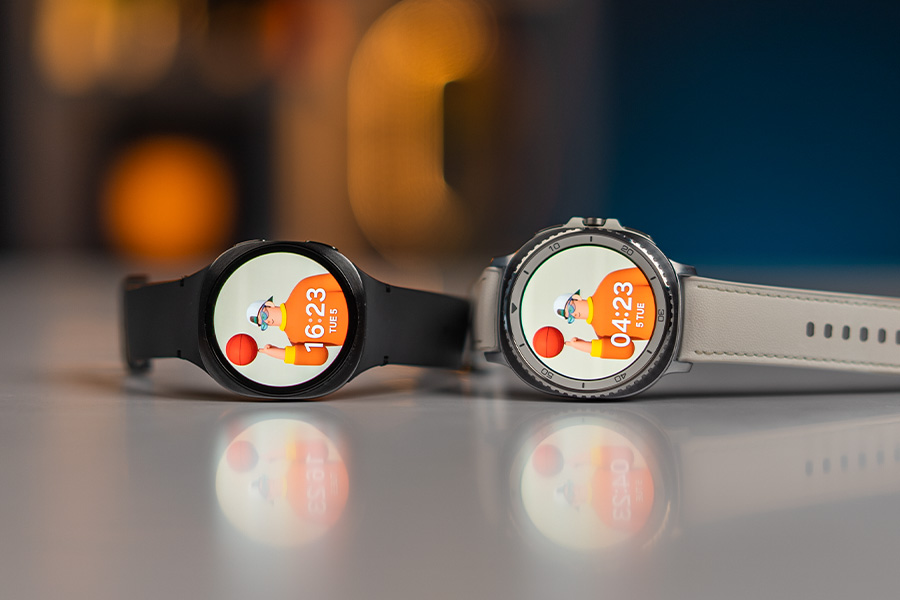
I know this squarish cutout is meant to be more like an additional layer of protection against bumps and stuff, but I’m not a fan. Especially for the Watch 8 Classic, since this 46mm watch has almost the same-sized display as the smaller 43mm Galaxy Watch 6 Classic (1.34-inch > 1.3 inch).
And another thing I don’t like about their design is that you can’t use your existing 20mm bands on these guys either. That’s because the Watch 8 series has the same “Dynamic Lug System” as the Watch Ultra… so your choices are:
- either buy new bands from Samsung if you’re into customizing your watch,
- or you can Frankenstein your old bands to fit into them using an adapter… which isn’t that easy to get in the first place.
The one good thing that has come out of this new band mechanism is that it now leaves a super tiny gap on the sides for a more flush look. This actually used to be such a big pet peeve of mine on older Galaxy Watches, since that made the watch look so much bulkier on my wrist than it really was.
Oh, and Samsung says this redesign makes the Watch 8 series 11% thinner while also improving the accuracy of health and fitness tracking.
So I guess you win some, you lose some here.
I almost forgot… the Watch 8 Classic gets some more “Ultra” love with the new quick button as well. I can program it to run different shortcuts like the workout app, and yeah, I love it. Just not as much as this rotating bezel though. Which has been slightly redesigned with these grooves on the sides for better grip and a tachymeter around the bezel.
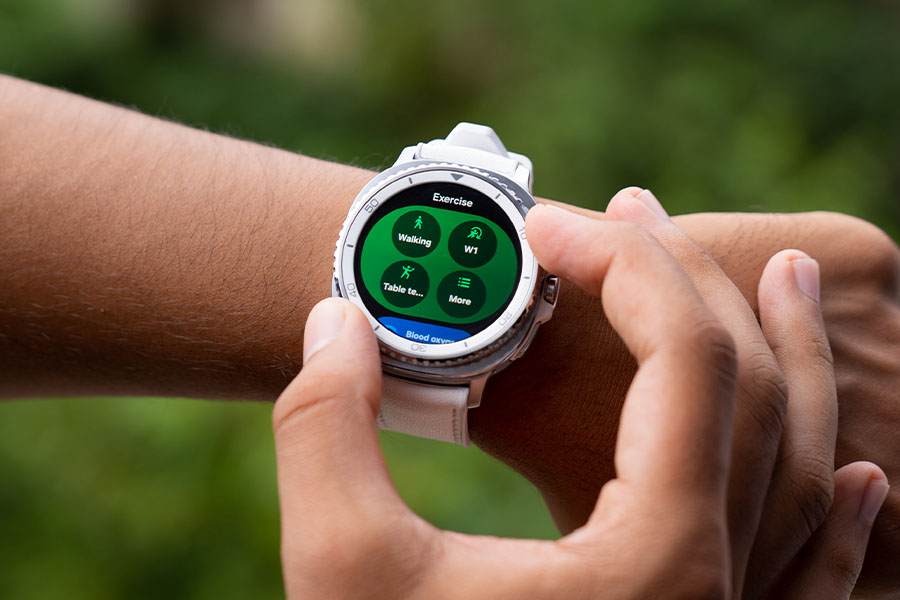
And then there are a couple more subtle differences between these two, by the way.
-
Like how the Watch 8 Classic has 64GB of storage instead of just 32GB on the regular Watch 8.
Even though both of them are powered by the same excellent Exynos W1000 chip as last year… alongside 2GB of RAM.
-
Plus, it also uses a stainless steel frame that is much harder to scratch than the aluminum frame on the Watch 8.
Display
- 1.34 / 1.47-inch Super AMOLED panel
- Sapphire Crystal glass protection
But I’m frankly not worried about the durability of either of these watches.
Not at all. That squircle design already cushions the blow if you’re a bit clumsy and somehow always find a way to bang the watch against rough surfaces, they’re also fully dust and watersealed, and they both have sapphire crystal glass for the display.
Which is literally the toughest glass you can slap on top of a smartwatch.
And speaking of display, the Watch 8 series now has a brighter 3,000 nits AMOLED panel too. That’s exactly 50% brighter than the older Galaxy Watches… so outdoor visibility has been just fantastic on these two. And of course, everything else on this Samsung-made display is as good as it gets. From colors to contrast, viewing angles, touch response… everything.
There are also a few new watch faces this time.
Including a bunch of analog ones, but where my eyes immediately went to is the one called “Dynamic Digits”. And is it just me, or does this look severely inspired by Apple’s “Flux” watch face that I first saw on the Watch Series 10 (review)?
Software
- Wear OS 6 (with One UI Watch 8 on top)
- 4 years of guaranteed updates
Anyway, so like I mentioned before, Samsung has completely overhauled the user interface this time. Which was a little surprising to me because last year’s One UI Watch 6 already had a notable redesign with fresh new fonts and some new-style widgets.
But the One UI Watch 8 (based on Wear OS 6) brings a fresh coat of paint pretty much everywhere you look. Now, if you’re wondering what the heck happened to One UI Watch 7, I think Samsung just wanted to match the naming style of its software across different devices. Just like what Apple did for all its operating systems a little while ago.
And the biggest visual change this time is definitely in terms of how you interact with all the widgets. So on older versions of Samsung’s One UI Watch, I could only have one widget on a page at once. That’s it.
But the fact that I can now stack several widgets onto a single page means I no longer need to endlessly scroll to get to the app I want.
No matter how fun it is to use the Watch 8 Classic’s rotating bezel!
The one thing I need to tell you right away is that this only works with Samsung’s built-in apps and shortcuts for now.
So, say I wanna add a Google Maps widget alongside one from Spotify, Outlook, and Google Keep notes… I can’t do that. I’m quite sure third-party app developers will be quick to jump into such widget styles soon enough, though, since this layout is actually part of the “Material 3 Expressive” design on Wear OS 6 itself.
Some other changes
Then there are a couple of other visual refreshes I’ve noticed.
- Like how the notification panel has the same disc-shaped UI element as the widgets.
- There's the "Now bar", taken straight from One UI 7 on Samsung phones.
- Whereas app icons on the app drawer also sit in a straight grid now… with the option to enable a separate “featured apps” section on top.
Oh, and the Galaxy Watch 8 and the Watch 8 Classic are the first smartwatches with Google’s Gemini baked in as well. I normally don’t like using voice assistants for anything — but I have to say — I really like the idea of having a virtual assistant that can actually understand what I’m talking about right on my wrist. Instead of having to reach my phone.
And it’s pretty great at the basic stuff too.
Like summarizing my email and notifications, or when I’m asking the most important question in the galaxy. Something like “What is Obama’s last name?”. I feel like I would have been constantly asking Gemini to do so much more stuff if only it could also control third-party apps, but nope.
Maybe Gemini gets this ability eventually.
After all, Samsung does commit to four years of OS updates and one more year of security updates… so I can already imagine Gemini getting a lot more capable in the future.
Battery
- Watch 8: 325 / 435 mAh
- Watch 8 Classic: 445 mAh
- 10W wireless charging support
On top of a…ll these UI upgrades, Wear OS 6 also sneaks in up to 10% better battery life.
I normally test all my smartwatches by having them measure everything they can — as frequently as they can — and the Watch 8 duo has been lasting me almost two full days on a single charge. Almost. The OnePlus Watch 3 is probably still the Wear OS watch to beat when it comes to battery life, although I’m quite happy with what I’m getting here.
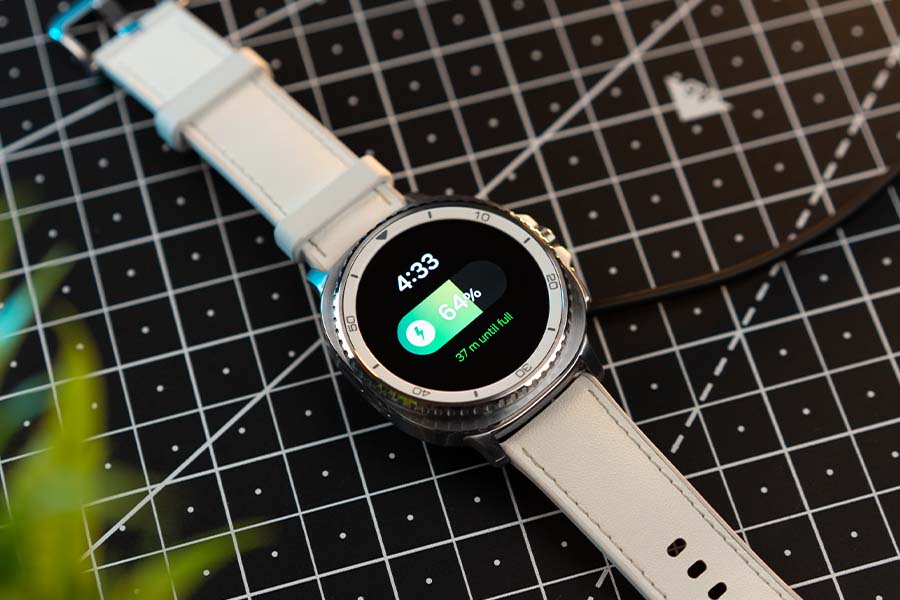
I can also get like 40% juice after plugging them in for half an hour, which is more than enough to get me through the day. So I’m really not complaining.
Health and fitness tracking
- 100+ workout modes
- Heart rate, stress, sleep, body composition analysis
- (NEW) Antioxidant index, Vascular load, Running Coach
Finally, I wanna talk about their health and fitness tracking side of things next.
So first things first, the Watch 8 series has the same second-gen BioActive sensor as the Galaxy Watch 7. That’s fine. But like I said, Samsung has managed to teach this old dog some new tricks with a handful of new health tracking features.
There are a couple of them, so let me go through them one by one.
The first one’s called “Antioxidant Index”. This thing basically tries to see how healthy I’ve been eating by measuring the carotenoid level (a type of antioxidant) in my food. It’s mostly found on green, leafy vegetables, sweet potatoes, carrots, chili pepper, and stuff… so I was already nervous about how well I’d do here.
So I took off the watch → pressed my thumb against the sensor for a few seconds → and bam! The Watch 8 Classic proved my worst fears right because it turns out my antioxidant level is pretty low indeed.
I don’t actively go around eating junk foods and try my best to maintain a fairly healthy eating habit, so I’m not sure if this Samsung watch is all that accurate.
And from what I’ve seen online, it seems that most Watch 8 owners are getting abnormally low antioxidant readings as well… so I’ll take its results with a grain of salt.
The Watch 8 series also debuts something called “Vascular Load,” which measures the stress on my vascular system as I sleep. I was actually quite excited for this one since it can provide really useful insights on how active I’ve been and how well I’m getting my rest. Kinda similar to sleep score and energy score… but this one is mostly concerned with my heart health.
Although I don’t know what I’m doing wrong because throughout the week that I’ve been wearing it, the Watch 8 Classic only managed to get my vascular load reading once. It takes three nights to establish my baseline — but I look at the app — and it says my watch “didn’t maintain proper skin contact throughout my sleep". What do I even do now?
Run, Forrest, run!
The new “Running Coach” feature here should be quite interesting if you’re preparing to run a marathon as well. I have no plans for running a marathon (and neither do I run that often), but I took its 12-minute running test anyway. And as you can see, it put my performance at a pretty embarrassing “Level 2” on a scale from 1 – 10.
Where Level 10 would mean I’m ready to rock on a marathon.
So yeah… I doubt you’ll be seeing me run a marathon anytime soon.
The last new health tracking on the Watch 8 series is something called “Bedtime Guidance”... and it’s exactly what it sounds like. It guides me on the ideal time I should go to bed. Sounds great, but it’s also the one I’ve ignored the most because that’s not feasible in my life. I can't just leave everything I'm doing and go to sleep just because my watch told me to.
You know what?
I actually don’t even wanna stay that healthy by following every single thing my smartwatch suggests. And all this health tracking stuff on the Galaxy Watch 8 actually made me question if I’m living to stay healthy or staying healthy to live.
Like… all these definitely made me feel overwhelmed to some degree.
I gotta do this, do that, I gotta watch out for this, watch out for that… sometimes it felt like I was carrying around an anxiety-inducing band with me. Instead of something that’s supposed to look out for my health.
Let’s move on.
So, besides all these new ones, every other health tracking feature on the Galaxy Watch 8 series is as good as it gets. From heart rate, sleep, and SpO2 monitoring.
And remember that “AGEs Index” thing that we first saw on the Galaxy Watch 7? I’m happy to tell you guys that it’s a lot more descriptive and insightful now. With a score system to help me understand how well my biological aging process is going.
And these are some of my favorite fitness trackers too.
I can keep track of all sorts of exercises or even create a custom workout routine, which is something I miss every time I go back to wearing a smartwatch from other brands.
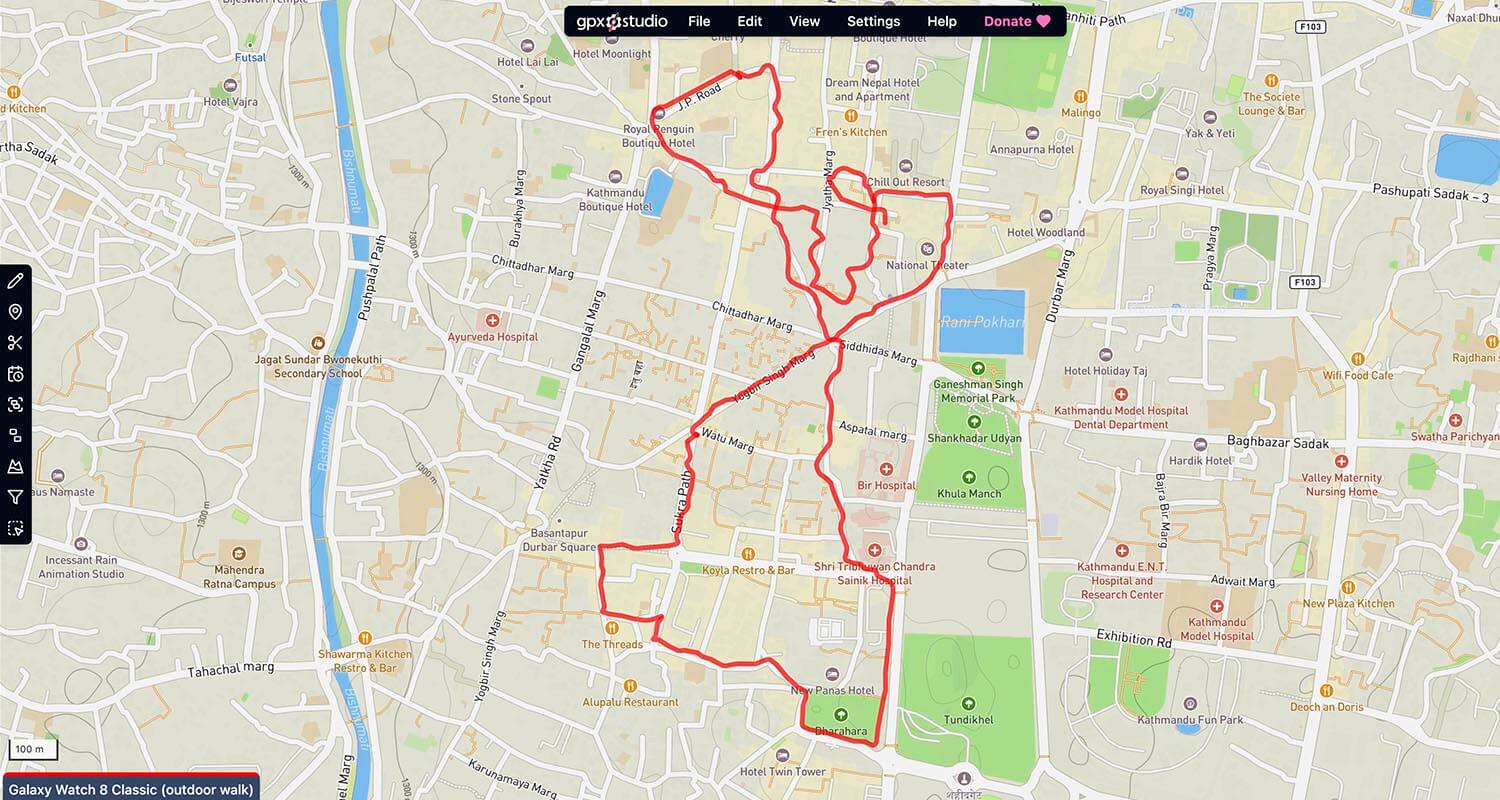
I’m also happy to see that Samsung has improved the location tracking this time. It still struggles a bit when I’m walking through some dense city streets… but the results I’m seeing here are much better than what I was getting on last year’s Galaxy Watch 7. Even though both of them have dual-band GPS.
Samsung Galaxy Watch 8 and Watch 8 Classic review: Conclusion
So, wrapping up this review, I still feel like the new Samsung Galaxy Watch 8 and Watch 8 Classic are some of the best Wear OS smartwatches you can buy right now. Actually, scratch that. These are some of the best smartwatches you can buy right now. That’s it.
They definitely have a bit of polarizing design and a couple of things that Samsung needs to iron out with a few software updates, but I stand by my words.
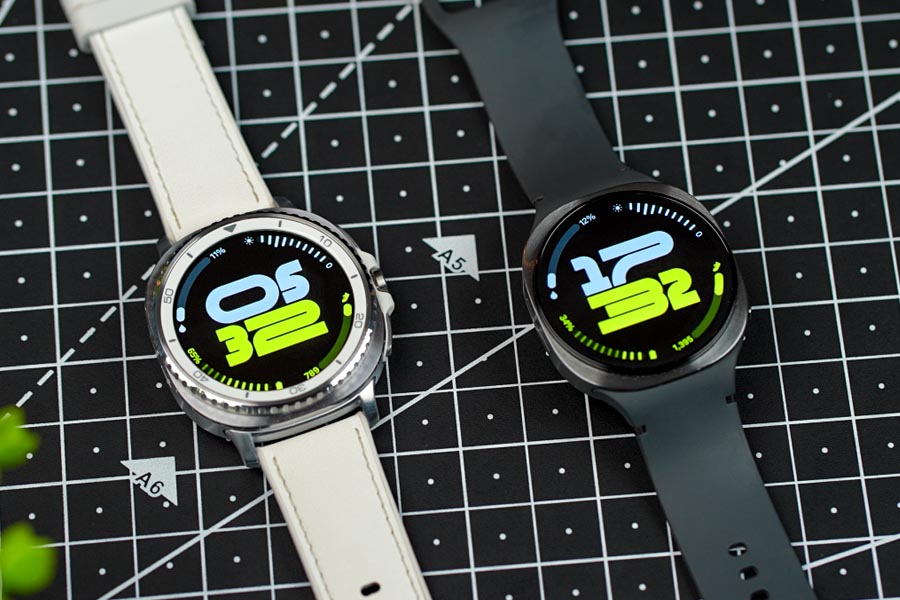
Now the only major problem I have with the Watch 8 series is the price.
‘Cause like I warned at the very beginning, these two are quite expensive. And if you want a more-or-less similar smartwatch experience at a lower price, I bet you're gonna love last year's Galaxy Watch 7.
It won't get a couple of health tracking features like "Antioxidant index" and "Vascular load" — and it also sucks that the Watch 7 is still selling at its original price even a year after its launch — but at least you'll save a couple bucks with that guy.
- Our video review of Samsung Galaxy Watch 8 and Watch 8 Classic is coming pretty soon
Samsung Galaxy Watch 8 and Watch 8 Classic review: Pros and cons
| Pros | Cons |
| • Durable build quality | • Expensive |
| • Gemini, baby! | • Uses a proprietary band system |
| • One UI 8 Watch is fantastic | • That "squircle" design may not be everyone's cup of tea |
| • A dependable health and fitness tracking experience | • Still no multi-day battery life |
| • 3,000 nits display |
Article Last updated: December 9, 2025



